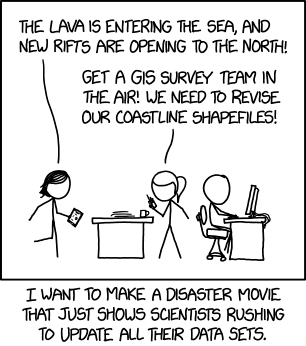
In 2014 cartographer Tom Patterson and his colleagues, Bojan Šavrič and Bernhard Jenny, introduced the eponymous Patterson projection, a cylindrical projection that reduced polar exaggeration while maintaining the familiar shape of continents.1 Patterson, who recently retired from the U.S. National Park Service, has teamed up with Šavrič and Jenny to produce a new projection: the Equal Earth projection.
This projection can be seen as the cartographer’s response to the Peters map: in fact, the team created it in reaction to the furor over the Gall-Peters projection being adopted by Boston public schools. “Our message—that Gall-Peters is not the only equal-area projection—was not getting through,” the authors wrote in the International Journal of Geographical Information Science (mirrored here). “We searched for alternative equal-area map projections for world maps, but could not find any that met all our aesthetic criteria.” Citing their own research into map readers’ projection preferences, they decided against projections like the Eckert IV, Mollweide and sinusoidal and opted to make their own: “a new projection that would have more ‘eye appeal’ compared to existing equal-area projections and to give it the catchy name Equal Earth.”
The end result is a Robinson-like pseudocylindrical projection that nevertheless preserves area—and, like the Robinson, is nicer to look at than a cylindrical equal-area projection like the Gall-Peters. It’s actually kind of impressive that they were able to square that particular circle. The article details their decision-making process and the math behind the projection and is worth a read. It’ll be interesting to see whether this map gains any traction. I wish it well.
Previously: The Patterson Projection; The Peters Projection Comes to Boston’s Public Schools; The Peters Map Is Fighting the Last War; More on Boston Schools and the Peters Map; The 74 on Boston Schools and the Peters Map.
New (17 Aug): Equal Earth Updates.






